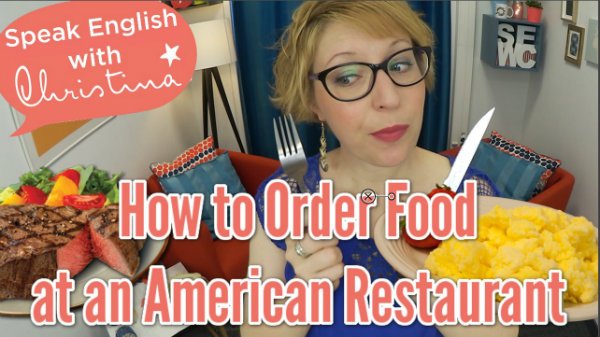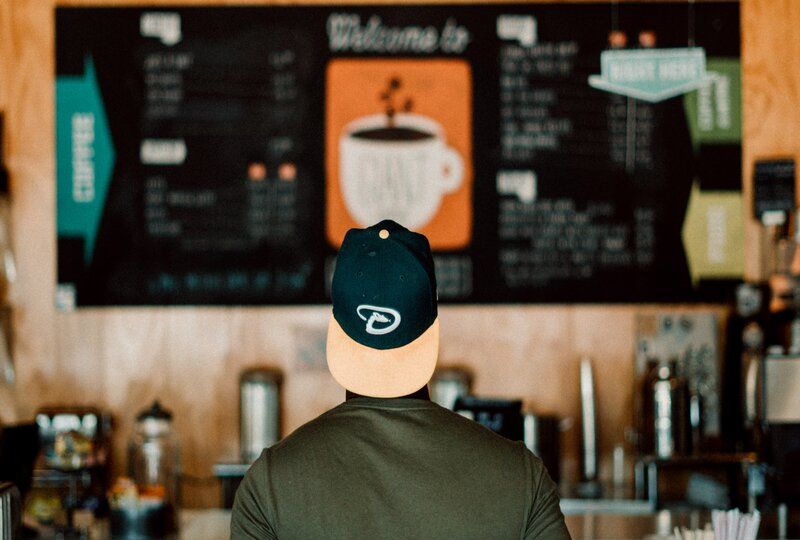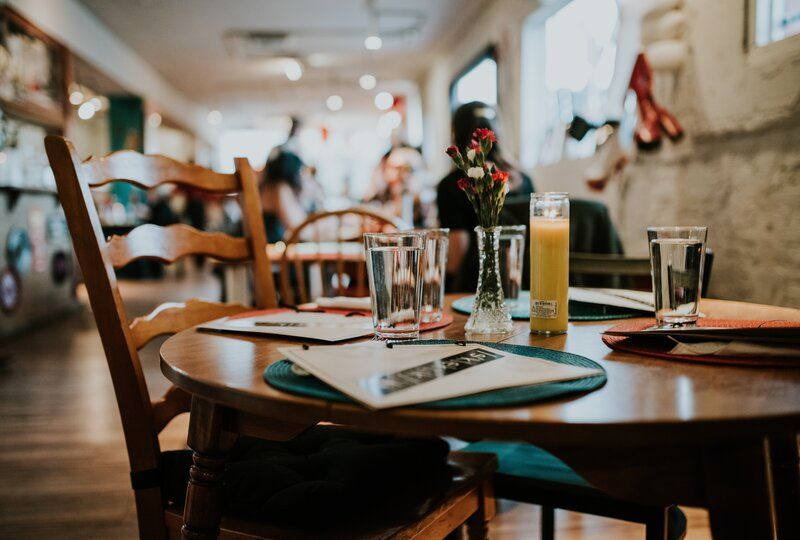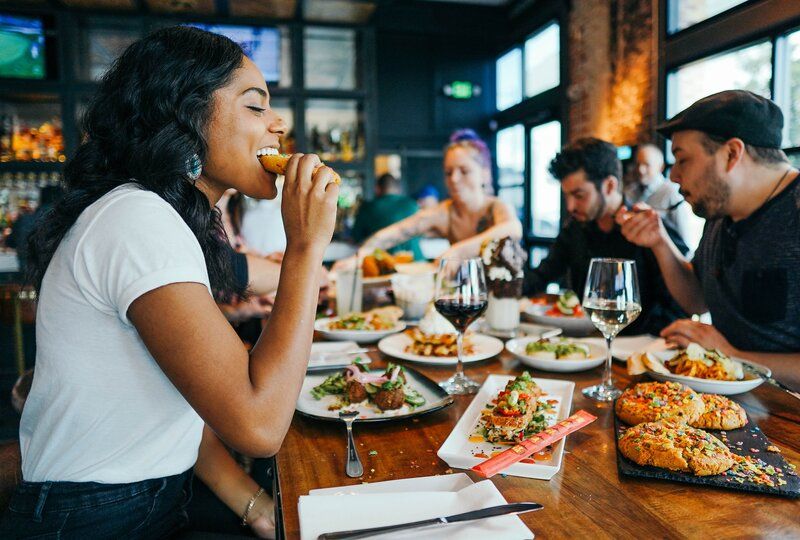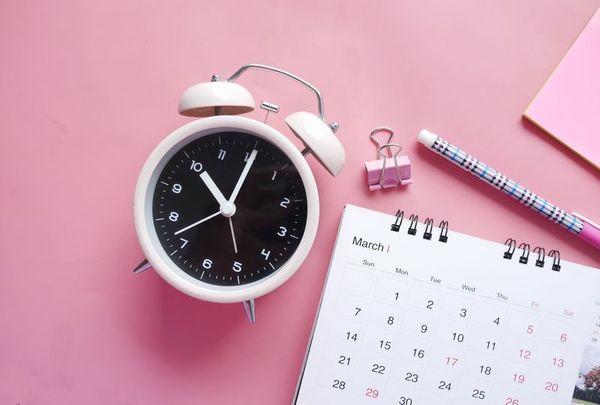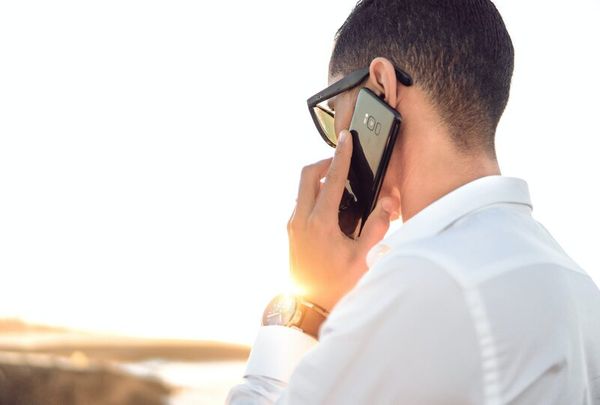How to order food in a restaurant in english
How to order food in a restaurant in english
How to order food in a restaurant in English
Learn how to order food in a restaurant in English. Our dog Carter (a dog with human hands in this video) will show you how. You’ll see him choose from the English menu, select his wine and then enjoy the meal. He also leaves a tip.
Restaurant conversation Video Script
It’s busy here tonight. I hope the waiter comes soon. I’m hungry! Ah, here we go. Now what shall I have? A steak, perhaps – medium rare. Or maybe the turkey. No, no, give me another minute. I haven’t decided yet. Ah, dear. Decisions, decisions. OK, I’m ready to order. I’d like a bottle of white wine, please – the chablis. And then, I’ll have the turkey, please. Yes, that’s it. OK. Let me check. Is this the one? Yes, that’s the one. Good. A little more please, I’m very thirsty. Great. Oh yes, that’s very good. Not too sweet and not too dry. Dinner, mmmm, that’s very good. A little more wine I think. Oh, this turkey’s great. Just what I wanted. Very tasty! What’s he bringing now? Oh, it’s the bill. So, how much is it? That’s not too bad. I’m going to leave a big tip. I think I’ll come here again.
To see more videos with phrases for everyday situations, click here.
To see another video with Carter the dog, click here.
Are you an English Teacher?
If you would like to use this video with your classes, you might like to use the video below too. It’s the same video but with no words. Students can use it to predict what Carter (the dog) is thinking and saying before they watch the video above.
Impress your friends by ordering food in English at a restaurant
Everyone likes eating out at restaurants. When you are in an English-speaking country, knowing how to order correctly can impress your friends and make the difference between an average and an amazing dining experience. Ordering food in English at a restaurant is easy, too – if you follow these simple tips.
Get the right table
Book a table on the phone or ask for a table by saying “We’d like a table for 5, please.” This will let the waiter know how many people to expect. The waiter might ask “How many people are in your party?” In this question ‘party’ means ‘group’ not ‘celebration’. If you’re in a country where people are allowed to smoke in restaurants, the waiter might ask if you’d like to sit in the smoking or non-smoking section. If you’re in a hot country, the waiter may ask if you’d prefer to sit indoors or outdoors. Make it clear exactly where you want to sit for a perfect meal.
What is your English level?
Take our short English test to find out.
Order drinks
Having a drink is a great way to pass the time while you are deciding what to order. The waiter might ask “Would you like to start with a drink?” and you can reply “Yes, we’d like (type of drink) while we decide on our food.” If you order a bottle of wine, the waiter might ask “Would you like to taste the wine?” when he opens the bottle for you. If you like it, you can reply “Yes, that’s fine.”
Order food
When the waiter asks “Are you ready to order?” or “Can I take your order?” If you are ready, you can give your order. Use “I’d like…” or “I’ll have…” to introduce your order and expression “for starter/appetizer” to talk about the first course and “for main course” to talk about the second course of food you will eat.
If you are not sure what to order, ask the waiter “What would you recommend?” to get some advice or “What are the specialities?” to find out what the most famous dishes are at that restaurant. You could also ask “What are today’s specials?” to find out if there are any dishes being served today that are not usually on the menu.
If you want to order wine with your main course, you can use the waiter’s expert knowledge to help choose something great. Ask the waiter “What wine goes well with this?” or “What wine matches this?” to make sure they taste great together.
Special considerations
If you cannot eat certain things because of your religion or health, check the menu carefully. Vegetarian and vegan dishes are usually marked but if not you can point at the dish on the menu and ask the waiter “Does this contain meat/nuts/dairy?” to find out if it’s OK for you to eat. Or, when the waiter gives you the menu, you can say “I can’t eat _____, which dishes would you recommend for me?”
Pay the bill
Catch the waiter’s attention and ask “Can we have the bill, please?” or “Check, please.” to see how much you need to pay. The waiter might ask if you want to pay separately or as a group. Check the bill to see if a service charge or tip has been added. This is money that is given to the waiting staff for good service. If this hasn’t been added, it’s common in most English speaking countries to leave some extra money (usually 10-15% of the bill) for the waiter.
So, now you know how to order food at a restaurant in English, all that’s left to do is enjoy your food and have a great time!
What is your English level?
Take our short English test to find out.
6 Easy Tips for Ordering Food in English Like a Local
Even after all your conversational English practice, ordering something to eat at a restaurant can still be a challenge.
Here, you’re going to learn how to place orders for food, say the same sentences in a variety of different ways and sound more casual or more formal depending on your situation.
Contents
Download: This blog post is available as a convenient and portable PDF that you can take anywhere. Click here to get a copy. (Download)
5 Easy Tips for Ordering Food in English Like a Local
1. Ask If You Can Get Something
Being polite goes a long way in any language.
When most native speakers order something, instead of saying, “I want ___”, they’ll ask “can I get ___”
This sounds less demanding and can help the flow of the conversation. Firstly, if they don’t have what you want, it sounds more natural to change your order. Second, it makes you sound more polite to the person you’re ordering from.
Here are a few examples. Imagine you’re in a cafe and you’d like to get a drip coffee (this is coffee which is prepared by dripping hot water through coffee in a filter).
1. “Can I get a drip coffee, please?”
2. “May I have a drip coffee, please?”
3. “Do you have drip coffee?”
4. “Can I order a drip coffee?”
They’re all questions instead of demands. Especially when talking to strangers, you want to sound more passive (casual and polite). If the answer to your request is “no” for any reason, you can quickly change your mind and say something like, “oh, alright. Then can I have an Americano, please?” (Americano is a coffee drink made from espresso and hot water.) The reply will usually be something like, “Yes, you can. Anything else?”
2. Start Off With a Greeting
Again, politeness is everything when ordering.
Most places, in the United States especially, have employees who are paid mostly through tips.
Tips are based on how well they provided service. This means that the employees will try hard to make you happy.
Usually, when you go to the counter to order they will say “hello” and they might ask “how are you today?”
You always want to return their “hello” and ask “how are you?” If they don’t say “hello” first when you get to the counter, it sounds most natural to order by saying, “hi, can I get a ___?”
This is the best way to start an order because it shows respect for the employee. You can choose any friendly greeting to start off the conversation, like hello, hi, hey or how’s it going? (listed in order from most formal to most casual).
Usually, you’ll want to match the level of formality to the person who talks first. This means if they say “hi”, then you say “hi.” If they say “hello”, then so do you!
3. For Here or To Go
In some countries the expression for taking your food with you outside the restaurant, is to go or take out.
However, to go is usually used for both drinks and food (and anything else you might consume), while take out is only used for food. To go is far more commonly used by English speakers.
When you want to order your food and take it with you, there are a few options.
“Can I get this to go?”
“I’d like the Spaghetti and Meatballs, to go please.”
“Can I have the Fried Rice and Egg Rolls? Take out.”
If a place says that they have take out, they’ll probably ask you if your order is “for here or to go”. If they don’t ask you that, make sure you tell them what you want before paying. (Some places charge different amounts depending on which one you choose.)
If you want to eat in the restaurant you simply say, “for here” or “for here, please.”
4. Yeah or Yes
Some people say that using yeah isn’t a very polite way to talk, but it’s way more casual and comfortable for most native English speakers.
If you’re in a formal restaurant or hotel cafe, you will want to use “yes”. If you’re in any casual dining place, it’s not necessary. If your answer is yes to any question, you can nod your head (up and down a little) and reply with yeah, yep, sure or an mhmm sound. This is all about the tone of how you say it.
If you’re smiling and happily say “yeah” it isn’t rude. If you’re not paying attention and mumble “yeah”, it’s then considered rude. Here are some examples of casual alternatives (different choices) to yes.
“Is that all you’ll be ordering?”
“Yeah.”
“Would you like this to go?”
“Yep.”
Another note is that when you do use “yes” to answer a question about adding anything, you want to say, “yes, please”. However, “yeah, please” sounds a bit awkward.
“Would you like cheese with that?”
“Yes, please.”
“Would you like whipped cream?”
“Yes, please.”
These words are generally said together quickly as if they were one long word. Because it’s a phrase, you say the words close together instead of including the pause. The longer you pause between the two the more formal, and eventually awkward, it’ll sound. The same can be said about “No, thank you”.
5. Always Be Prepared for Extra Questions
Especially when you go to a sit-down restaurant (this is a term for any restaurant that isn’t fast food or take out, but it doesn’t have to be anything expensive either) you may have more questions asked while ordering and after ordering.
Sometimes after ordering, you may want to quickly walk away to go sit down. Or, if you’re ordering multiple things, you may try to list everything you want to order at once with a group.
Instead, it’s best to pause for a short amount of time after ordering each item. That way, the employee can ask you more questions!
When ordering a coffee, you may need to specify if you’d like it iced (cold) or hot, or what size you want. Some places will ask you if you want cream and sugar, and then they’ll add it for you.
If you order eggs or steak you need to answer how you’d like them cooked. Eggs may be scrambled (mixed up and cooked in little bits), omelettes (cooked in a circle and folded), over easy (a simple fried egg) and sunny side up (fried egg cooked only on the bottom side, so the yolk — the yellow part — on top stays liquid).
You may be asked if you’d like any fillings (cheese, meat, vegetables and other things to put inside the egg) or side dishes (smaller plates of food which accompanies the main meal). You may also be asked if you want something on top of your food, a certain preparation style for your food, if you’d like to order any desserts and much more.
When the time comes to pay for the meal, they may ask you if you’re paying with credit, debit or cash. Always give time to let the employee ask these things.
If you know they’ll ask certain questions, you may want to state those answers beforehand to save them the trouble. Say what size order you want, or how you’d like your coffee. Ask for a steak and tell them if you want it cooked well done (cooked thoroughly), medium (average) or rare (less cooked, still red inside).
Always be polite and answer these questions, and never forget to end with a “thank you”
6. Practice Ordering Food in English (Before You Leave Home!)
Talk to yourself in the mirror, or simply talk out loud. Try using all these English phrases before you need to use them, so you’ll be ready when the time comes to order.
Now that we’ve talked about the different tips, let’s try putting them together in one sample conversation that you can use to practice.
“Hello, welcome to The Coffee House. How are you today?”
“Hello, I’m pretty good, how are you?”
“I’m great, thanks for asking. What can I get for you today?”
“Can I get a large coffee, please? With cream and sugar.”
“Yes, is that all for you today?”
“Would you like to try our new chocolate scone?”
“No, thank you.”
“Card, please.”
“Please sign…here’s your receipt.”
“Thank you.”
“Please wait at the counter over there for your coffee. Thank you, have a nice day!”
“Thank you, you too.”
To hear how native speakers order food, I recommend listening to actual English speakers at your local restaurant. No English speakers near you? No problem, you can find videos on YouTube and authentic programs like FluentU, which turns videos made by native speakers (commercials, clips from movies and TV shows, etc.) into English lessons.
We all know how much Americans and Brits enjoy their respective cuisines (the eternal battle of burgers vs. fish and chips), so there are plenty of conversations and content about food on FluentU and around the internet.
I hope these tips will help you next time you’re ordering in English.
Remember, it’s more about the way you say things (your tone) than the words themselves. When said in a light tone with a smile, anything will seem more polite and natural. Also, remember to speak loudly and clearly in any food or drink environment, so that the employees can understand you.
Christine McGahhey is an American writer currently living in South Korea who has volunteered for several years to teach students and adults English.
Download: This blog post is available as a convenient and portable PDF that you can take anywhere. Click here to get a copy. (Download)
How to order food in an American restaurant
What’s one thing that we all like to do when we travel? Eat!! Going to a restaurant in English, to discover the local cuisine is one of the best parts of traveling! But going to a restaurant means speaking English to the server. You want to order your steak and eggs like an American? Let’s go!
ARRIVING AT THE RESTAURANT
In the US, the customer is king! We love customer service! So when you arrive at a restaurant, a host or hostess will often welcome you, with a quick “Hi, Welcome to Applebee’s. Party of how many?” It sounds like /haï, welcome tuh Appuhlbeez. Pardee uh how many?/. Watch the episode to hear how it sounds!
When they ask “Party of how many?” it means “How many people are in your group. Or sometimes, if it’s a small group, or a family, they might quickly count and ask you to confirm: “Hi, Welcome to Applebee’s. Party of 2?” That sounds like /pardee uh too?/
Then, they might give you the choice of type of table you want, for example, a booth, a high top, at the bar, or just a table. You’ll hear something like “Would you like a booth or a table?” /wuhdjuh laïkuh boo thuruh taybuhl?/
For me, I like the booths!
DRINKS
When you go to a restaurant you automatically get a glass of water. Generally it’s the size of your forearm, comes with a slice of lemon, and has more ice than water. If you don’t want a small glacier in your glass, you can ask “Can I have no ice please?” And the server will know you’re a tourist…
If you want a beer, you can ask the server “What do you have on tap?” “On tap” is beer that’s poured at the bar.
Or you can ask “What kind of bottled beers do you have?”
The server will either bring you a drinks menu, or give you a long list of beers you’ve maybe never heard of: Blue Moon, Sam Adams, Fat Tire.
If you want to just try something new, you can say “I don’t know, what’s the most popular beer?” and let the server guide you.
For non-alcoholic drinks, it’s mostly soft drinks, Coke, Dr. Pepper, etc. If you’re traveling to the South, like to my home state of Mississippi, you have to try sweet tea. It’s a typical drink of the southern United States, or as some people call it “the house wine of the South.” Because we’re classy like that.
SALAD DRESSING
In many countries, you order salad, it comes with one type of sauce, or maybe olive oil and vinegar. Not in the USA! If you thought it would be easy to order salad… Nope! You have to choose your salad dressing, the sauce that you put on your salad.
The server will ask you “What kind of dressing do you want with your salad?” It sounds like /whuh kinda dressin duhyuh wan wih thyuhr salad?/. Watch the episode to hear how it really sounds!
My favorite, and maybe the most typical, is Ranch dressing. But other common choices are blue cheese, thousand island, Italian, or possibly French.
But to be honest, I’ve never tasted anything like French dressing in France or or Italian dressing in Italy. I don’t know… If you try it, come back and let me know what you think.
HOW WOULD YOU LIKE YOUR STEAK COOKED?
If you order any type of beef, the server will ask you “How would you like your steak cooked?” /How wuhdjuh laik yuhr steak cookt?/
Here are your choices:
Rare (which is impossible to pronounce. Watch the episode to practice pronouncing it correctly)
Medium rare
Medium
Medium well
Well done
And a joke my French teacher told me once: “How does a French chef know he has an American in his restaurant?” “There’s an order for steak that’s well done.” Because a lot of Americans are afraid of eating meat that isn’t completely cooked.
HOW WOULD YOU LIKE YOUR EGGS COOKED?
If you order any kind of breakfast in the US, there’s a good chance you’ll have eggs. And eggs are better cooked, right? So the server will ask you “How do you want your eggs cooked?” Or /how duhyuh wantchur eggs cookt?/ Watch the episode to hear how it sounds in real spoken English.
You can have scrambled–, my favorite. There’s hard boiled, hard boiled, where it’s cooked all the way. Sunny side up, Sunny side up, where the egg is cracked in the pan and cooked on one side only. There’s over easy, over easy. It’s similar to sunny side up, but the egg is cooked on both sides, so that it’s a liquidy on the inside, but cooked on the outside. Mmmm…
Be sure to watch the episode to hear how these expressions sound, and to see images of all of this yummy food!
How to Order at a Restaurant in English
Ariel Craine
Whether you love to patronize your local restaurant every night or you prefer to cook at home, knowing how to order food in English is an undeniably important skill for English language learnings.
Let’s say you’re traveling and trying to impress your friends—or even your boss! Or you could even be planning to spend a holiday working abroad and you need to know English service industry lingo. In all of these situations, familiarizing yourself with the intricacies of ordering and paying at a restaurant in English could save you from embarrassment—or worse, getting the wrong dish!
When in doubt, pointing at a picture to your waiter and saying «This, please» will work in a pinch, but there’s so much more that you should know! In this article, we’re going to explain some nuances of ordering in English, how to navigate more complicated situations, and some social norms you might find in restaurants in English-speaking countries.
Without further ado, read on so you can impress all of your friends with your effortless etiquette and English skills!
First Course: Learn the Basics
As Kelsey taught us, many words (and food names) are different in the English-speaking world, especially between the US and England!
The variety of English in different countries will come up later, but first, let’s break down a a basic list of vocabulary that is very useful in any dining situation:
That’s it! Check out this video to hear some of these words put into a practice conversation, in British English.
If you prefer American English, try this video using TV series as examples.
Second Course: Learn How to Order
Let’s break down the steps of eating out at a restaurant.
English Phrases to Start Your Meal
Many places prefer if you call in advance to reserve a table, especially if you have a big party. (Remember, here, party means «a group,» not a celebration.)
To place a reservation, you can say:
«Hello, I would like to make a booking/reservation for a party of (number of people) at (time) on (day).»
Ex. Hello, I’d like to make a booking for a party of 6 at 8 o’clock on Tuesday.
If you have no booking and walk into a restaurant, you can ask:
«Hello, do you have availability for a party of (number of people)?»
Or they might ask right away:
«How many people are in your party?» And you can answer with your group size.
As you sit down, you can ask for the main menu or for special menus like the children’s menu or a drink menu. If your server comes by before you are ready, simply tell them:
«We need a few more minutes, please.»
How to Order Food in English
Order in English usually looks like this:
«I’d like the (name of the dish), please.»
Ex. «I’d like the fried rice with shrimp, please.»
Here are more ways to order food, ranging from most formal to least formal.
When ordering for others, we often use the same forms but with indications for who we are speaking for:
«For her/him/them, she/he/they’ll have the. »
«We’ll share the. «
It’s also common to ask for suggestions. You can ask the server:
«What do you recommend?»
«What is the special for today?»
Your server might ask you follow-up questions, such as:
«How would you like your meat cooked?»
«How would you like your eggs cooked?»
Dietary Restrictions and Asking for Exceptions in English
If you have dietary restrictions—that is, specific needs for your food—you can ask your server.
Here are some examples of useful phrases for common dietary restrictions:
Ordering To-Go/Takeaway
While many places offer food delivery through apps, sometimes it is still cheaper to call a place directly and order! To order over the phone, it’s the same as in person—however, you’ll need to be prepared to give your address and phone number.
If you are stopping in a restaurant and would like to take your food home, simply tell them:
«To-go, please.»
«For takeaway, please.»
If you’re eating out at a restaurant but don’t finish your food and would like to take it home (perhaps useful in places like the US, where portions are HUGE!), here are some useful phrases:
Could I get a to-go box?
Can I have a doggy bag? (slang for a box for takeaway).
Helpful English Phrases for Miscellaneous Situations
Here’s some quick tips on troubleshooting.
If you drop your silverware or it’s dirty, you can ask:
«Could I have another (fork/knife/spoon), please?»
If your food arrives cold or off in some way, tell them:
«Excuse me, my food is (cold/undercooked/overcooked), could you send this back?»
Or, if they deliver you something you didn’t order, you can say:
«Excuse me, I ordered something different, the (dish name).»
If the kitchen has run out of an ingredient, the server might tell you:
«I’m sorry, we are out of. » and then they will ask you to choose another dish.
Whew. Hopefully this doesn’t happen! When in doubt, stick to this useful phrase:
«Could I have. (whatever you need)?»
Learn How to Ask for the Check
At last! You are full and hopefully had a great meal. Before you go, you must ask for the check.
The best way to ask is to simply say:
«I’d like the bill/check/to pay, please!»
Sometimes the waiter might ask you if you would like to pay together as a group, or separately. They might also ask if you prefer to pay with card or with cash.
Check your receipt and see if there has been a service charge already added. If not, read on below for more information on tipping and other social trends you might find in parts of the English-speaking world!
Social Nuances of Ordering in English-Speaking Countries
In many English-speaking countries, dining out has certain social expectations. For example, in the USA, your server is expected to be incredibly involved, polite, and prompt. If you are from a country that prefers a more relaxed dining style, such as Spain, you might be a little put off if your server immediately hands you the check without you first asking for it. (You can read more here for dining cultural differences in the US from the rest of the world.)
Or, for example, in some countries like South Korea, calling out your request from a distance is considered totally normal. However, in many English-speaking countries, this would be considered rude (it is considered more appropriate to make eye contact with your server, say «excuse me» and wait for them to come to you).
Customer service in the US is often a bit too cheerful for some. This is because in places like the US and Canada, servers are hoping to earn your favor. This brings me to.
Tips! Tips, as we explained above, are extra money you give to your server for their good service. In the US, this can be anywhere from 15-20% of your bill, with the higher percentage indicating you had great service. In Canada, this is more often 15%.
However, some casual or no-service based restaurants, like food trucks or fast casual places, might not require or expect a tip.
In Australia and New Zealand, it is not as common, and when it does occur, is more around 5%. The UK, however, has little to no tipping culture at all and is not expected.
If this seems confusing, don’t worry! Do a bit of research on the dining differences of the regions you are interested in. Here’s a guide to tipping around the globe. As you know, the Anglophone world is big and varied, and norms not only vary within, but are also constantly changing. Read here for more information on making the most of your study abroad—or work holiday or trip!
English Has Never Been so Easy!
To conclude, I’ve created a practice conversation that ties ALLLLL the information we’ve learned together.
Let’s read this conversation between the server and Hannah, a native English speaker.
Server: Hello, welcome to Speechling’s Incredible Restaurant! How many people are in your party?
Hannah: We are a party of seven. We have a reservation for 7:30 under the name ‘Hannah’.
Server: Great! Follow me to your table.
Server: Here are your menus. Our special for today is mushroom risotto. I’ll be back in a moment to take your order.
Server: What would you like to order?
Hannah: To drink, we’ll have waters.
Server: Still or sparkling?
Hannah: Still, please.
Server: And to eat?
Hannah: To start, we’ll share the truffle croquettes.
Server: Great, and for the main course?
Hannah: I’ll have the eggplant parmesan with the salad. For her, she can’t have nuts. Does the pesto pasta contain nuts?
Server: Yes, it contains pine nuts. I would recommend the marinara pasta instead.
Hannah: Great. And is that vegetarian?
Server: Yes!
Hannah: Perfect. Now, for him, he would like the garlic pizza. Is it possible to substitute the mushrooms for another vegetable?
Server: Sure, we can add eggplant or peppers.
Hannah: The peppers sound great. That’s it!
Server: I’ll be back soon with your order!
Server: Here’s your food.
Hannah: Oh, this eggplant parmesan is a little cold.
Server: Would you like me to send it back?
Hannah: Yes, please.
Server: I’ll be right back with a new plate of eggplant parmesan!
Hannah: Excuse me, we would like the check.
Server: Right away! Together or separate?
Hannah: Together, and with card.
Server: Here you are.
Hannah: I’m leaving a 20% tip because you were so wonderful!
Server: Thank you!
As you can see, this interaction uses much of the vocabulary and phrases we learned. You have probably noticed by now that most of ordering in English is sticking to set phrases that are easy to memorize. With a little practice and some time, you’ll be ordering like a pro!
Now, you are totally prepared to order in front of all your family and friends. Go forth, and enjoy!
Speechling is a nonprofit app and website that combines human coaching with technology to improve your foreign language speaking.
10 grammar tips for Chinese beginners
Every one who has tried to learn a new language has probably experienced the frustration of wanting to say something, knowing all the right words, but just not being able to put them together in the right way. Chinese is no exception with rigid grammar structures and words like 了
How to Start Speaking Brazilian Portuguese in 2 Weeks or Less
You really can learn to speak Brazilian Portuguese in just two weeks or less. But you must use the right methods and have a sensible game plan. You’ll find both in this article.
How to Answer the Phone in English
Phone calls. Love them, hate them, you have to admit: even the biggest texter needs to make a phone call at some point. You’ve surely done it a bunch—you often need to use the phone for: Doctor’s appointments Technical support Interviews Customer service requests Making reservations And so much more.
Источники информации:
- http://englishlive.ef.com/blog/english-in-the-real-world/impress-friends-ordering-food-english-restaurant/
- http://www.fluentu.com/blog/english/how-to-order-food-in-english/
- http://christinarebuffet.com/blog/order-food-in-an-american-restaurant/
- http://speechling.com/blog/how-to-order-at-a-restaurant-in-english/


